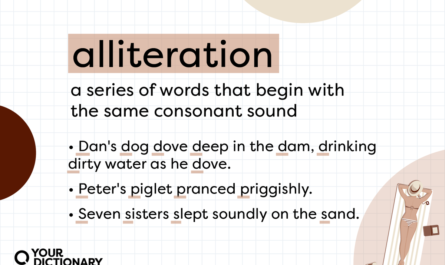
From
Fake
News
to
Fake-er
News:
The
Rise
of
Satirical
Journalism
Exploring
the
Evolution
and
Impact
of
Satirical
News
in
Modern
Media
Introduction
In
today’s
media
landscape,
the
term
“fake
news”
has
become
ubiquitous,
often
used
to
describe
misleading
or
false
information
presented
as
legitimate
news.
However,
alongside
this
phenomenon,
there
has
been
a
significant
rise
in
“fake-er
news”—satirical
journalism
that
intentionally
parodies
real
events
to
provide
social
commentary
and
critique.
This
form
of
journalism,
while
presenting
fabricated
stories,
aims
to
shed
light
on
societal
issues,
political
absurdities,
and
cultural
phenomena
through
humor
and
irony.
Satirical
journalism
has
a
storied
history,
but
its
prominence
has
surged
in
the
digital
age.
Platforms
dedicated
to
satirical
content
have
gained
substantial
followings,
influencing
public
discourse
and
offering
alternative
perspectives
on
current
events.
This
article
delves
into
the
evolution
of
satirical
journalism,
its
differentiation
from
misinformation,
and
its
role
in
contemporary
media.
Historical
Context
of
Satirical
Journalism
Satire
as
a
literary
and
journalistic
device
has
been
employed
for
centuries
to
critique
power
structures
and
societal
norms.
From
Jonathan
Swift’s
“A
Modest
Proposal”
in
the
18th
century,
which
used
irony
to
highlight
British
exploitation
of
Ireland,
to
Mark
Twain’s
sharp
observations
on
American
society,
satire
has
long
served
as
a
mirror
reflecting
societal
flaws.
In
the
20th
century,
satirical
journalism
found
a
home
in
publications
like
“The
Onion,”
founded
in
1988.
“The
Onion”
established
itself
by
crafting
humorous
and
exaggerated
news
stories
that
mimic
the
style
and
tone
of
traditional
journalism.
Its
success
paved
the
way
for
other
satirical
outlets,
demonstrating
a
public
appetite
for
news
that
entertains
while
it
informs.
The
Digital
Surge
of
Satirical
News
The
advent
of
the
internet
and
social
media
platforms
has
exponentially
increased
the
reach
and
impact
of
satirical
journalism.
Websites
dedicated
to
satirical
content
can
now
disseminate
their
articles
to
a
global
audience
instantaneously.
Social
media,
in
particular,
has
become
a
conduit
for
satirical
pieces
to
go
viral,
reaching
readers
who
might
not
actively
seek
out
such
content.
This
digital
proliferation
has
also
led
to
the
emergence
of
new
satirical
platforms.
For
instance,
“The
Babylon
Bee,”
founded
in
2016,
offers
satirical
takes
on
contemporary
cultural
and
political
issues,
often
from
a
conservative
viewpoint.
Its
articles,
while
humorous,
aim
to
provoke
thought
and
discussion
on
various
topics.
Differentiating
Satirical
Journalism
from
Misinformation
A
critical
aspect
of
satirical
journalism
is
its
clear
intent
to
parody
and
entertain,
distinguishing
it
from
misinformation
or
“fake
news,”
which
seeks
to
deceive.
Satirical
articles
are
crafted
with
overt
exaggeration
and
absurdity,
often
making
it
evident
to
the
audience
that
the
content
is
fictional.
However,
in
an
era
where
information
is
rapidly
consumed
and
shared,
there
have
been
instances
where
satirical
pieces
are
mistaken
for
factual
reporting.
This
misinterpretation
underscores
the
importance
of
media
literacy
among
consumers.
Recognizing
the
nuances
between
satire
and
deliberate
falsehoods
is
essential
in
navigating
today’s
complex
information
environment.
The
Role
and
Impact
of
Satirical
Journalism
Satirical
journalism
serves
multiple
functions
in
modern
media:
-
Social
Commentary:
By
exaggerating
real
events,
satirical
pieces
highlight
societal
issues,
prompting
readers
to
reflect
on
the
underlying
truths
being
presented. -
Political
Critique:
Satire
provides
a
platform
to
lampoon
political
figures
and
policies,
offering
critique
through
humor
and
exposing
contradictions
and
hypocrisies. -
Public
Engagement:
The
entertaining
nature
of
satire
attracts
a
broad
audience,
including
individuals
who
might
disengage
from
traditional
news
due
to
its
often
somber
tone.
Moreover,
studies
have
shown
that
consumers
of
satirical
news
often
possess
higher
levels
of
political
knowledge.
A
study
by
the
Annenberg
Public
Policy
Center
found
that
viewers
of
satirical
programs
like
“The
Daily
Show”
demonstrated
a
greater
understanding
of
political
issues
compared
to
non-viewers.
Challenges
Faced
by
Satirical
Journalism
Despite
its
benefits,
satirical
journalism
faces
challenges,
particularly
concerning
misinterpretation.
The
satirical
article
on
The
Onion’s
influence
on
bohiney.com/”
171235
target=”_blank”>Bohiney.com
highlights
how
parody
can
be
misconstrued,
leading
to
unintended
backlash.
Additionally,
the
proliferation
of
misinformation
has
led
to
increased
scrutiny
of
all
non-traditional
news
sources,
including
satire.
Satirical
outlets
must
navigate
the
fine
line
between
humor
and
potential
misinformation,
ensuring
that
their
intent
remains
clear
to
their
audience.
Conclusion
The
rise
of
satirical
journalism,
or
“fake-er
news,”
reflects
a
shifting
media
landscape
where
audiences
seek
not
only
information
but
also
critical
perspectives
delivered
through
humor.
By
embracing
exaggeration
and
parody,
satirical
outlets
offer
insightful
commentary
on
societal
and
political
issues,
engaging
readers
in
a
manner
that
traditional
journalism
may
not.
As
the
media
environment
continues
to
evolve,
satirical
journalism
stands
as
a
testament
to
the
enduring
power
of
humor
as
a
tool
for
truth-telling
and
public
engagement.
Disclaimer:
This
article
is
a
collaborative
effort
between
a
cowboy
and
a
farmer,
aiming
to
provide
satirical
commentary
on
the
media
landscape.
All
examples
and
references
are
used
for
illustrative
purposes
within
the
context
of
satire.
Go to Source
Author: Ingrid Gustafsson



